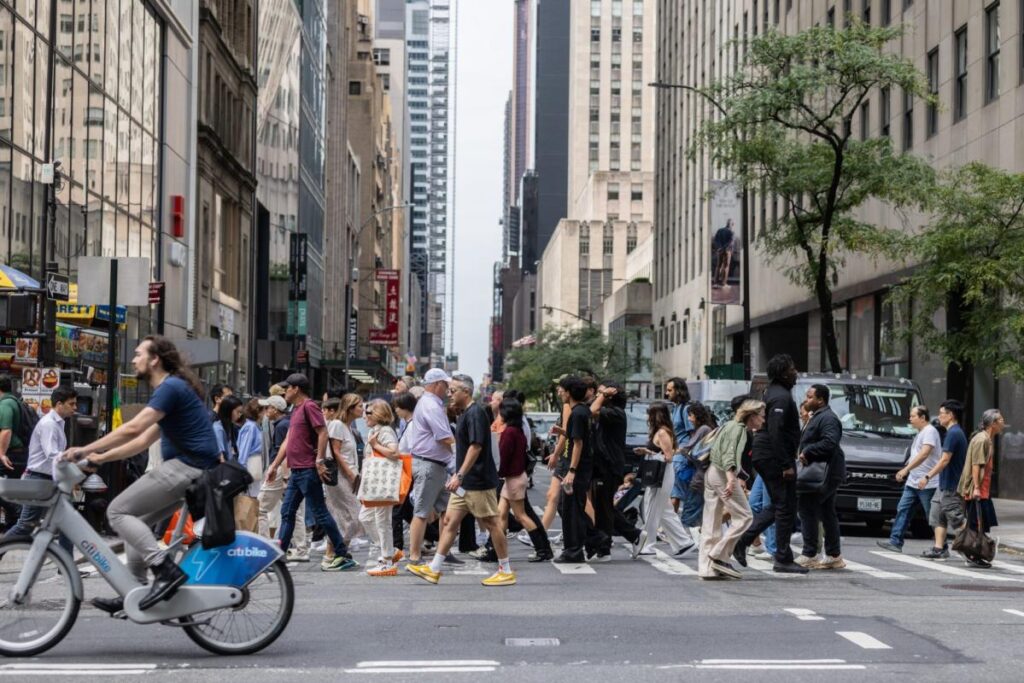In 2024, the economic landscape was notably influenced by key players such as the Federal Reserve, mega-cap stocks, and large banking institutions; however, the real backbone of stability turned out to be American consumers. Throughout the year, economists and analysts speculated that rising inflation and elevated interest rates set by the Federal Reserve would eventually limit consumer spending, leading to potential job losses and an overall slowdown in economic growth. Contrary to these predictions, consumer resilience became apparent, surprising industry leaders like Bank of America CEO Brian Moynihan and JPMorgan Chase CEO Jamie Dimon. These trends indicated not only that consumers had withstood the economic pressures but that a more optimistic outlook was emerging, with Bank of America projecting a continued positive economic trajectory through the end of 2024 and into 2025.
Analysts who previously feared a “hard landing” for the economy began to reassess their viewpoints, noting a newfound sense of economic stability. Bank of America economist Stephen Juneau conveyed a more optimistic tone, forecasting a gradual decrease in interest rates over the next several quarters, potentially reaching 3% by late 2025. This anticipated reduction in rates would likely support real wage growth and consumer spending, providing a stark contrast to earlier projections that highlighted imminent financial difficulties for households. Juneau noted that while individuals are managing higher borrowing costs, the associated pressure of increased expenses has led to changes in consumer behaviors, particularly in sectors like housing.
The current state of the housing market has also played a crucial role in shaping consumer spending trends. With many homeowners hesitant to sell—due primarily to high mortgage rates—spending on renovations and related purchases has seen a decline. This limited mobility in the housing market has further influenced spending behaviors, as potential buyers put off larger purchases. However, as interest rates eventually decrease, there is an expectation that this stagnant market will experience renewed activity. New homeowners often stimulate economic activity through spending on durable goods and home improvements. As consumers become more mobile, the resulting economic ripple effect could enhance overall consumer confidence.
Looking ahead to the holiday season of 2024, businesses are optimistically preparing for increased consumer spending. Data from Bank of America indicated that millennials and Gen Z anticipate holiday expenditures of around $4,000 and $3,300, respectively, while older generations, including Boomers and Gen X, plan to spend significantly less. Despite the overall upward trend in spending, a considerable share of younger consumers—68% according to the survey—reported anticipating financial strain and actively seeking discounts. Notably, preparations for holiday shopping are starting earlier than in previous years, with nearly half of younger consumers indicating they plan to begin their shopping by Black Friday. This trend reflects a strong underlying health among consumers, demonstrating their willingness to spend despite ongoing economic challenges.
As the outlook for 2025 gathers momentum, expectations surrounding Federal Reserve interest rate cuts are likely to enhance consumer engagement. Lower interest rates are expected to incentivize movement within the housing market, catalyzing associated spending activities. According to Juneau, as consumers transition to new homes, they often invest in complementary durable goods such as appliances, further fostering economic growth. The anticipated ripple effects of increased mobility and consumer spending could lead to a broader recovery in the housing sector, signaling a positive shift for various related industries.
Sector-specific performance indicates how changes in consumer behavior have already started to manifest. For instance, the home improvement sector has felt a downturn due to the slowdown in housing activity, with Lowe’s reporting a 5.1% drop in comparable sales and Home Depot adjusting its annual sales expectations downward. Nevertheless, Juneau remains optimistic about the forthcoming consumer climate, attributing this confidence to decreasing inflation, enhanced purchasing power, and the prospect of Federal rate cuts. Overall, the 2024 economic narrative paints a picture of resilience and adaptability among consumers, suggesting that, despite external pressures, a steady recovery looms on the horizon for the American economy as we approach 2025.

